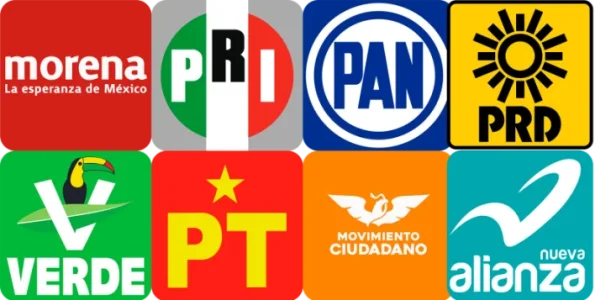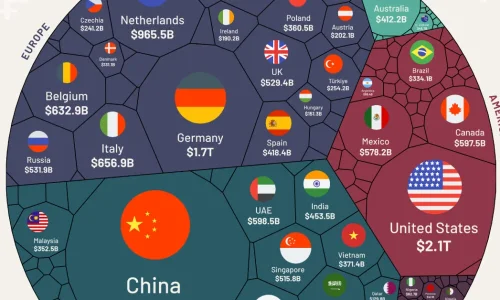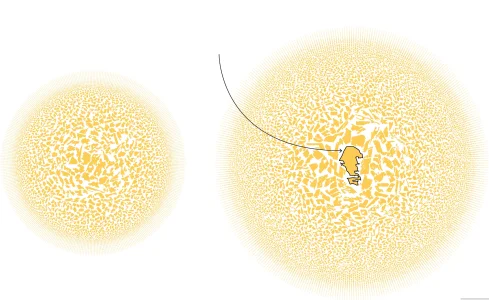- Joined
- Jul 3, 2024
- Messages
- 792
- Likes
- 374
lol, you are contradicting yourself.
In the first post you compare a Chinese province with Indian ones.
In the next post, you tell someone else to not compare countries
You have a unique perspective
lol, you are contradicting yourself.
In the first post you compare a Chinese province with Indian ones.
In the next post, you tell someone else to not compare countries
I did not change the subject, you simply can not say China is a dictatorship, I can say the Mexican president is corrupt in Radio or TV but you can not say that about Xi, do not lie to your self we are from different countries and political systems, definitively Mexico is corrupt there is crime and repression not a paradise but most citizens can opine in Mexico and say politicians are corrupt we have the right to opine
You can complain 24 hours a day,
You can elect a president once a month,
But it doesn't make much sense,
You should go back to Mexico and build your country.
have you ever lived in a westeren country? for your English very likely you have, democracies allow you to vote overseas, so I am still active in politics, democracy allows you to vote for different partiesOn September 10, it was reported that carbon fiber is hailed as the king of new materials. Its fibrous form is soft and can be processed into various fabrics, with a very wide range of applications. According to CCTV, the first batch of heavy-duty railway freight cars made from domestically developed carbon fiber is currently undergoing final debugging in Qiqihar, Heilongjiang, and will soon be launched.
The research base, Beijing Low Carbon Clean Energy Research Institute, stated that traditional railway freight cars are primarily made of steel and aluminum alloy. The railway freight cars being launched this time are the first to use new materials primarily composed of carbon fiber, featuring reduced self-weight, increased load capacity, and larger volume.
Researchers indicated that the carbon fiber composite panels used in railway freight cars are made from carbon fiber as the raw material, with one of the key processes being "impregnation." By modifying polymer resins, their mechanical properties and environmental adaptability have been significantly enhanced. The modified polymer resin is impregnated with carbon fiber strands through the impregnation process to form carbon fiber prepreg (note: this is a sheet-like intermediate material).
Researchers used this special resin through the impregnation process and a high-temperature, high-pressure curing process to ultimately obtain the panels, whose strength far exceeds that of existing metal materials. Even when tested with a hammer by a CCTV reporter, there was no change at all.
In addition to freight cars, the world's first carbon fiber subway train for commercial operation, "CETROVO 1.0 Carbon Star Express," was officially launched in June this year in Qingdao. This train was developed jointly by CRRC Sifang and the Qingdao Metro Group, reducing weight by 11% compared to traditional subway vehicles. Currently, the train has completed factory type testing and is scheduled to enter passenger demonstration operation on Qingdao Metro Line 1 within the year.


Then why are your countrymen trying to come to Mexico? Why don’t you consider your words carefully before you open your yapping hole?You can complain 24 hours a day,
You can elect a president once a month,
But it doesn't make much sense,
You should go back to Mexico and build your country.




“Mexico has to do its own review because we buy 119 billion dollars a year from China and sell 11 billion to them,” he said at an event held in San Luis Potosí, where he accompanied President Andrés Manuel López Obrador and virtual president Claudia Sheinbaum.

yes so what you are 1400 million people, Germany is 80 Million people and exports 1.7T and The netherlands is 24 million and export almost 1 T. so what? Mexico is 130 million and exports 593B, so to put it in contexts your levels per capita are still third worldChina exports 3.5T per year,
119 billion is part of that

yes so what you are 1400 million people, Germany is 80 Million people and exports 1.7T and The netherlands is 24 million and export almost 1 T. so what? Mexico is 130 million and exports 593B, so to put it in contexts your levels per capita are still third world
View attachment 10245



WASHINGTON (Reuters) -General Motors and Ford Motor would need to stop importing vehicles to the U.S. from China under a proposed rule cracking down on Chinese software and hardware, a U.S. Commerce Department official told Reuters Monday.Said you r jobless, u don't know how the economics running.
In EU, Belgium and Netherlands, theirs ports like Antwerp, Amsterdam are mainly I/O hub for the whole EU, that's why they have huge size on import and export value.
Wasting my time for such simple logic.
Said you r jobless, u don't know how the economics running.
In EU, Belgium and Netherlands, theirs ports like Antwerp, Amsterdam are mainly I/O hub for the whole EU, that's why they have huge size on import and export value.
Wasting my time for such simple logic.





